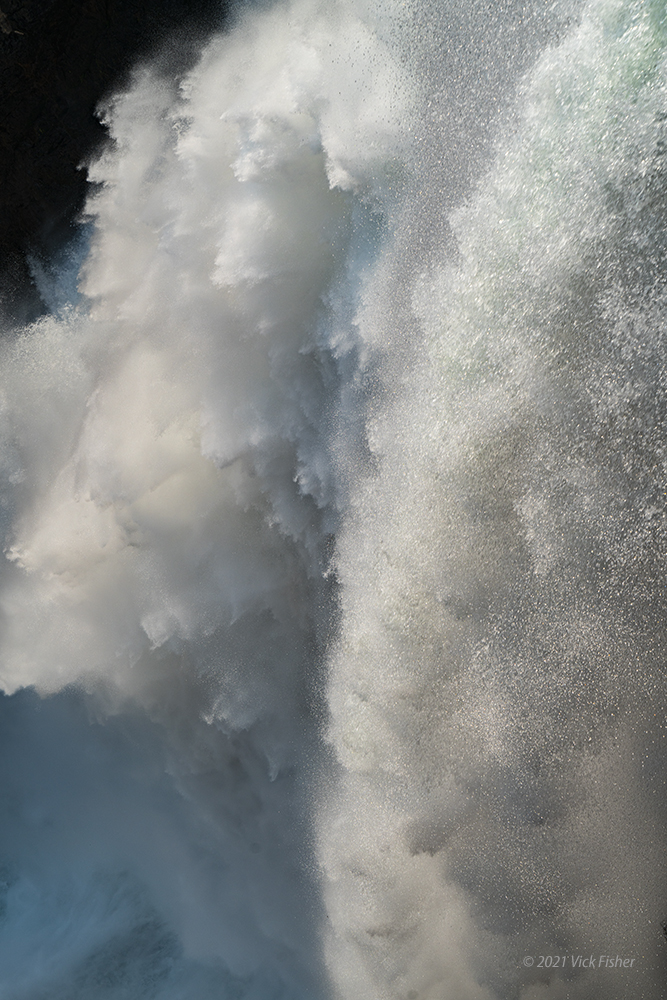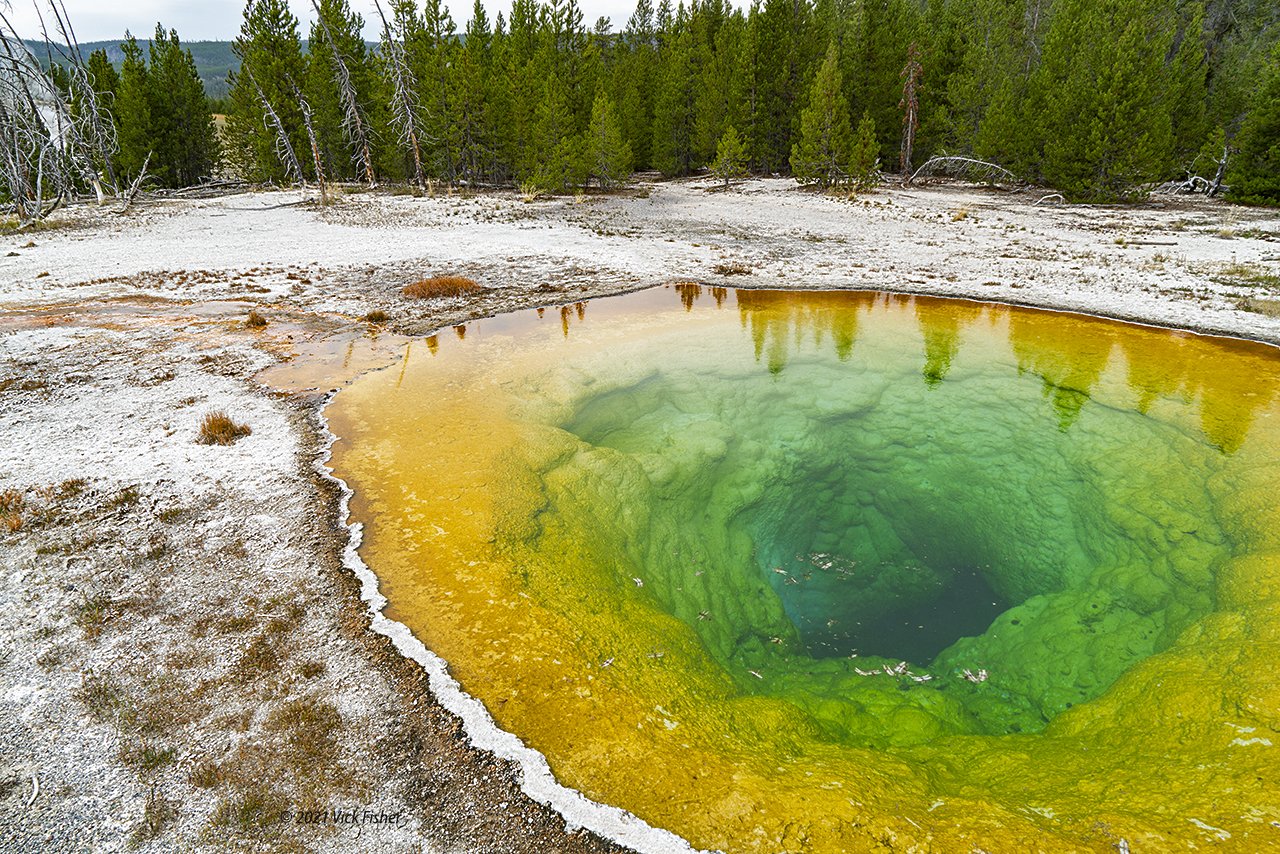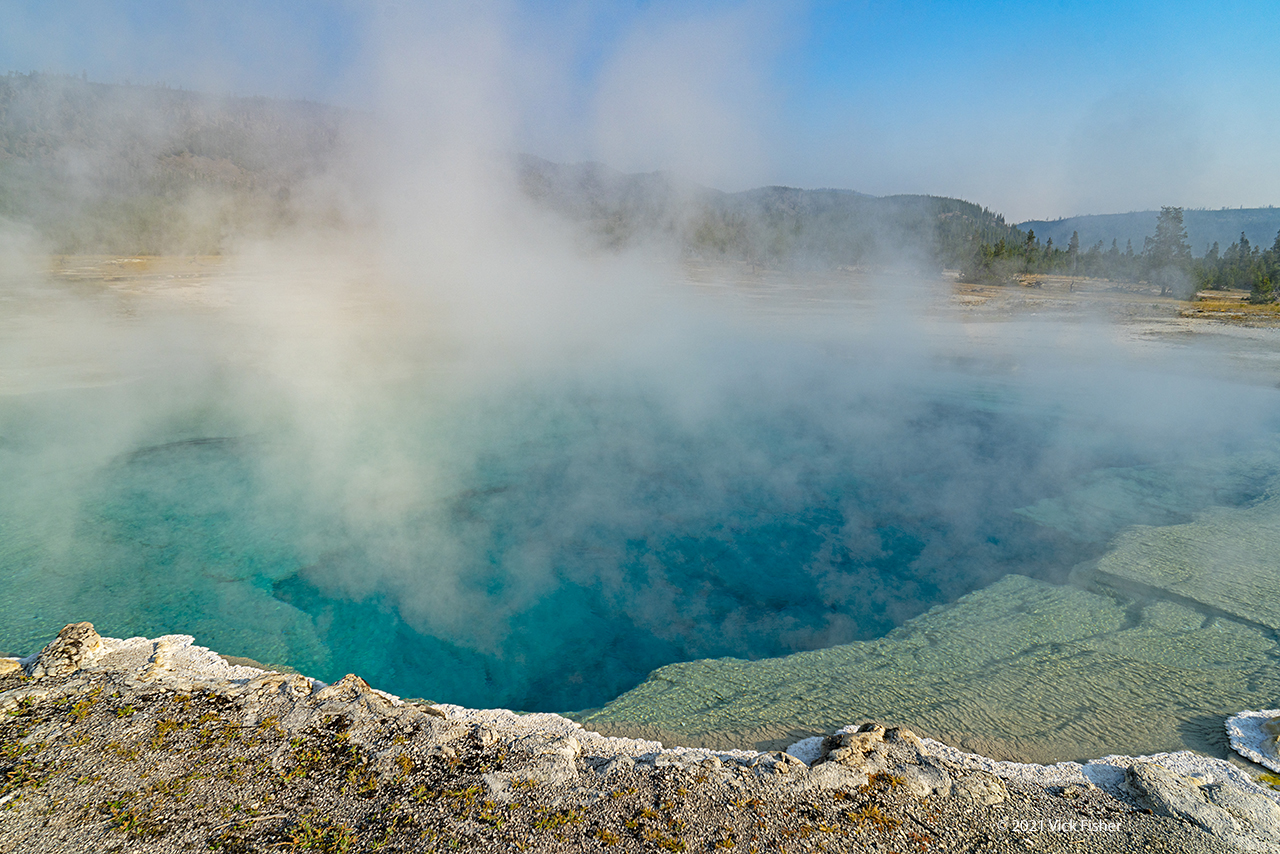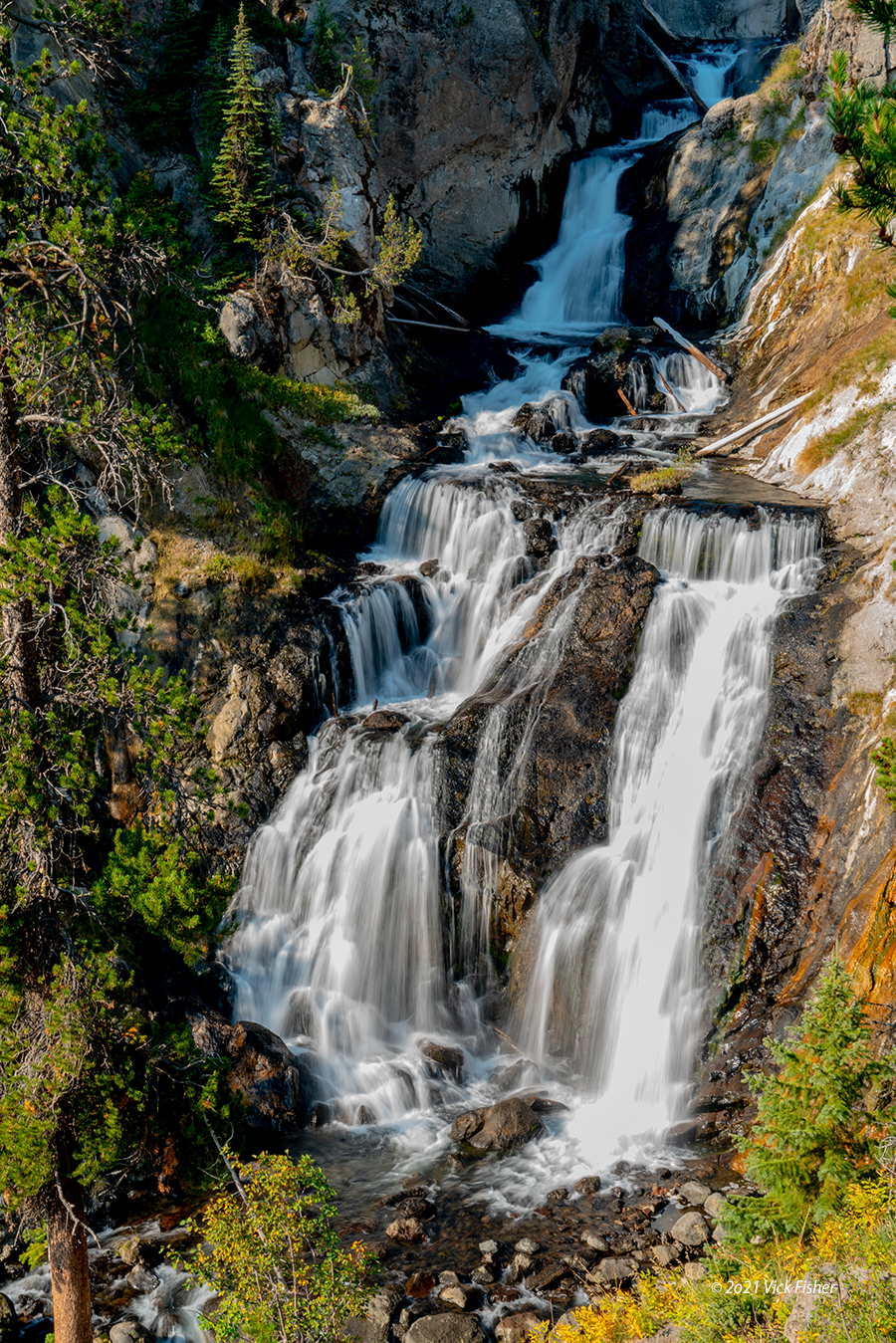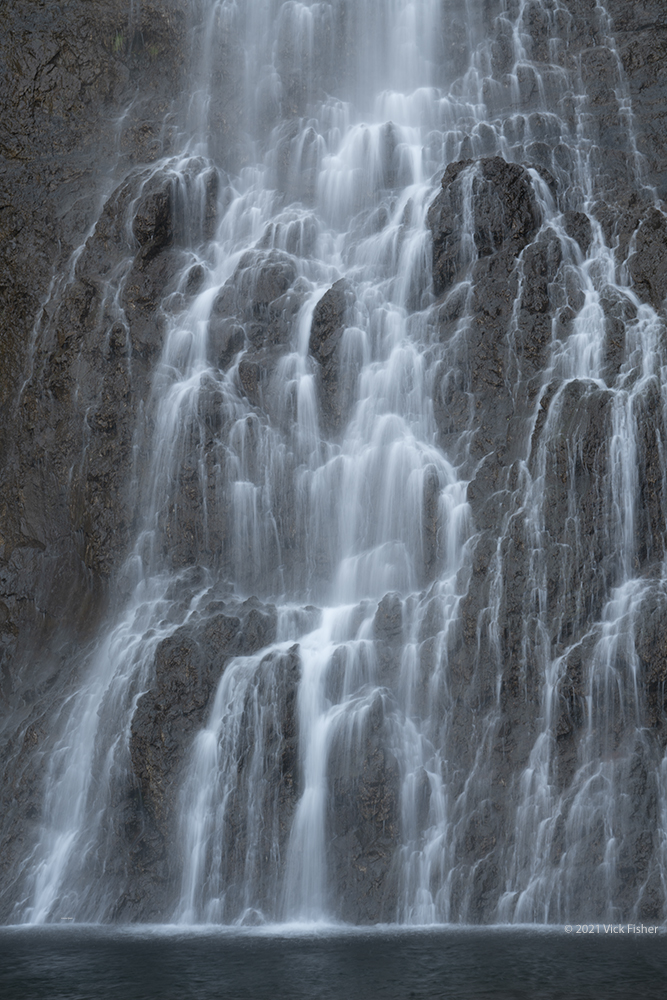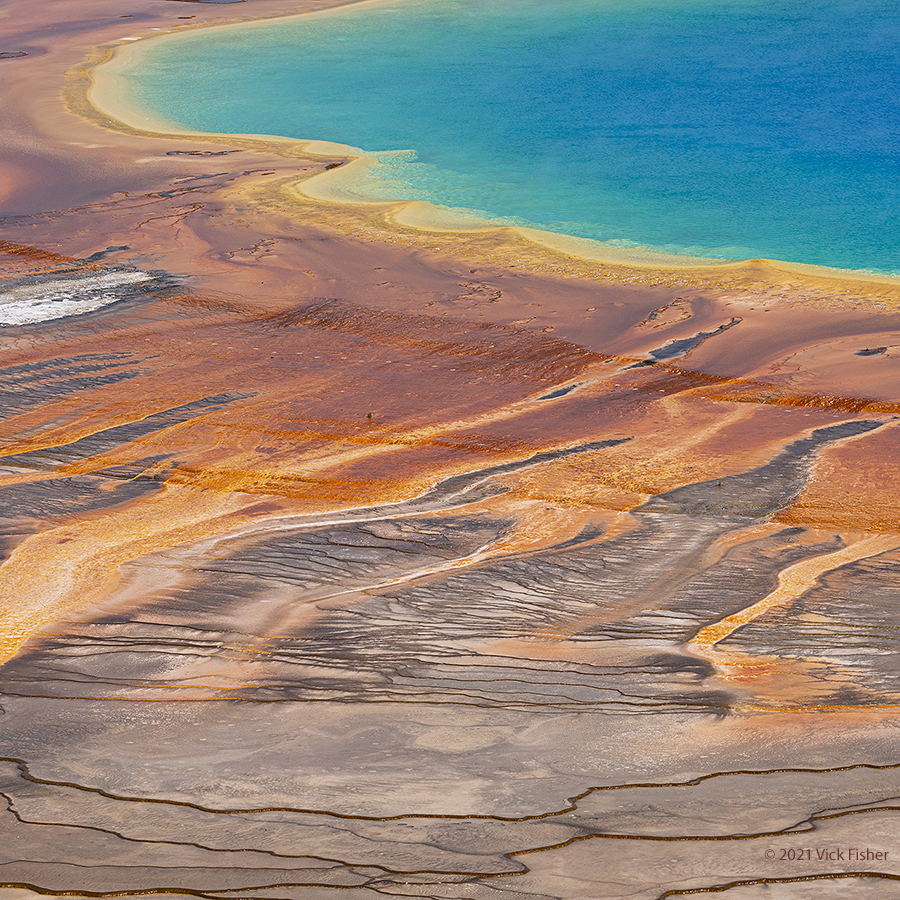I'd never heard of the Grand Canyon of Yellowstone until we got there. I knew there was a huge and amazing waterfall in the park, but didn't know an amazing bonus canyon came with it. The photo below shows the Lower Falls, which created the deeper part of the canyon. It's called the Lower Falls, because there is another waterfall only a mile or so upstream on the same river, called Upper Falls.
We spent a few days hiking both sides of the canyon, and visiting both falls. At the Upper Falls, they have a platform right next to the falls. There is a short, steep downhill hike, called Brink of Lower Falls, to the viewing platform. If you look at the upper right corner, you'll see a person looking out over the falls from the brink. This helps give a sense of scale to the scene.
Standing on the platform, it's a thrill to see the water rushing over the brink while feeling the rumbling sound in your chest. These next three photos are some of my favorites of the trip. I love how the individual drops of water catch the sun's rays in the closer part of the photo, the green tint to the water, and how it looks like an explosion of water in slow motion. I love the shapes formed by the water as it plummets hundreds of feet, and the way the sun illuminates the water from the inside. I these would look amazing printed six feet high, mounted side by side on a huge wall in a luxury hotel.
This is an early morning view looking downstream from Inspiration Point.
Here's another view of the Lower Falls from a trail along the south side of the canyon. The viewing platform for the Brink of Lower Falls is there. There is a softer type of rock underneath right where the falls starts, that's what created the falls. It started out flat, but the water wore away this softer rock much faster than the harder rock further upstream.
A view of more of the canyon. We spent every evening watching the sunset from somewhere along the north rim or the south rim. It's only a few minute drive to all the viewpoints along the canyon from Canyon Village.
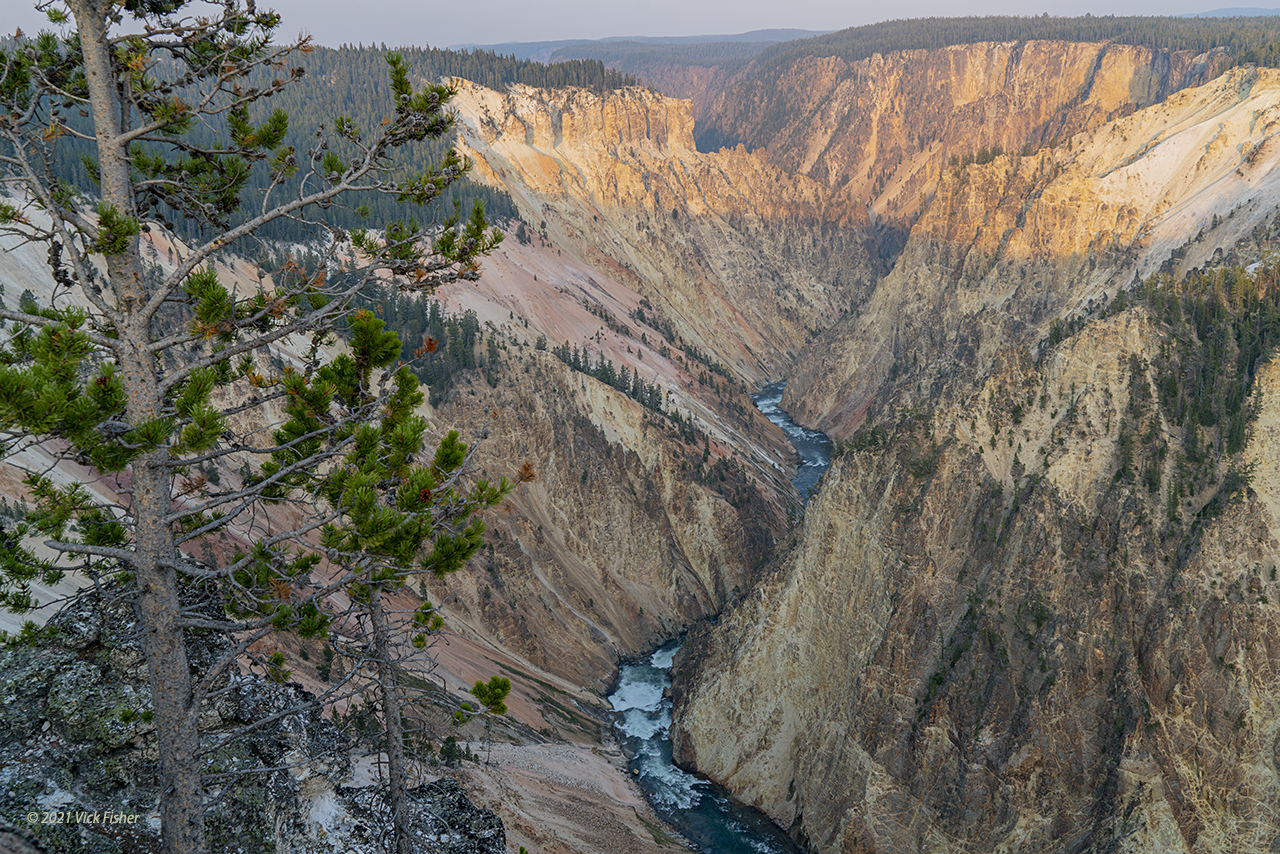
We also spent time chasing geyser eruptions in Upper Geyser Basin. We were fortunate to be in the right place at the right time to see two geysers that don't erupt quite as often or as reliably as Old Faithful. Here's Beehive Geyser erupting. Some people stood right in the shadow of the spray and got soaking wet just for fun. The brilliant rainbow was a great surprise.
Same eruption of Beehive Geyser, without the people and walkway.
Here's Old Faithful erupting. They post a schedule in the visitor center, accurate to plus or minus about five minutes. There was a crowd of a few hundred waiting to see it. It lasts about a minute or so.
Some of the pools around the geysers and springs have thick mats of bacteria in amazingly vivid colors.
A great example of the colorful mats of thermophilic bacteria. This is the area surrounding Grand Geyser. Yes, the color is really like that in person.
Grand Geyser is the largest predictable geyser in the park, though the prediction time window is over two hours. You need to be patient or lucky to get to see it. We were a little of both. We decided to do the wonderful five mile hike around the area while waiting. On that five mile hike, we got to see the fantastic Morning Glory Spring. You can really see deep down into this one. The colors are thick mats of thermophilic bacteria. "Thermophilic" is just a generic term for "heat loving" bacteria that thrive in this extremely hot water all summer, and even during the incredibly cold Wyoming winters.
After the hike, we went back to the visitor center for lunch. The rangers stopped everyone on the trail due to an angry bison. We had to wait a while for him to calm down, then give him a wide berth. Finally Grand Geyser erupted. The eruption lasted a few minutes, and had a false start with a few smaller jets of water, and then a couple of false endings too, where it stopped, then shot way up again. That was a lot of fun.
Click here to see the few days before that when we hiked around Grand Teton National Park.



